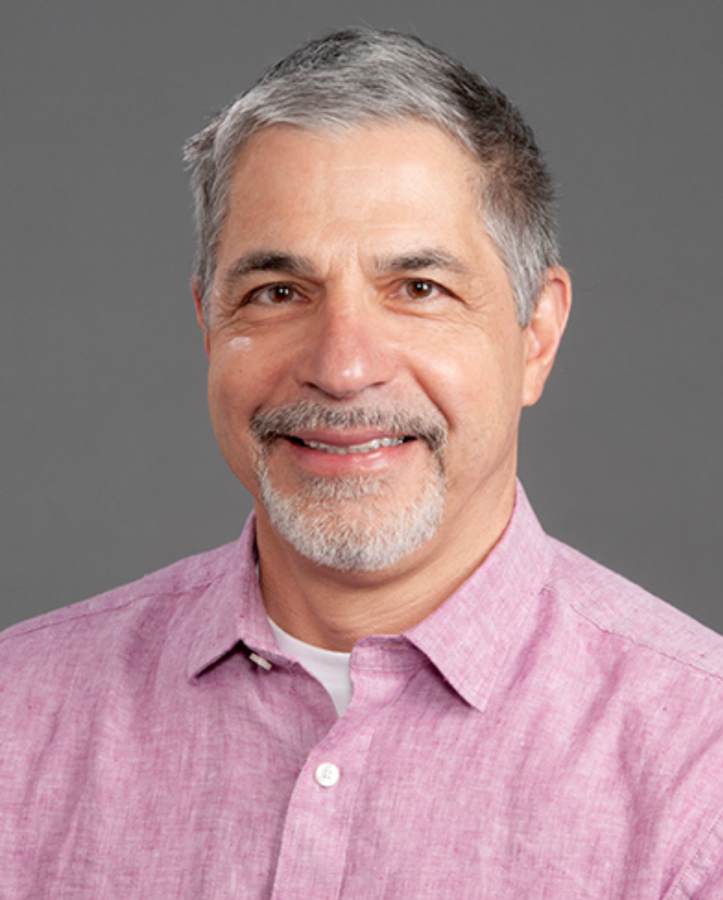Wake Forest research supports a multi-treatment approach to the drug abuse crisis
Researchers hope to develop more brain-related treatments for addiction
Dr. Michael Nader leads the Center for Addiction Research at Wake Forest’s medical school.
May 6, 2023
Drug overdoses claimed the lives of more than 100,000 U.S. citizens this past year — a toll greater than the 2021 gun-related deaths and motor-vehicle deaths combined.
“It is a huge problem,” said Dr. Michael Nader, a professor of physiology and pharmacology at the Wake Forest School of Medicine. “I can assure you that there is no brain disease that costs society more than substance use disorder.”
This is because the government spends more than $56 billion trying to control the substance abuse crisis through criminal justice — a tactic that critics say is just not working.
“We need to get a grip on things. Incarceration is not a treatment, and it’s not doing anything to help the drug problem,” Nader said. “We need to focus more on treatment, both behavioral as well as developing medications.”
This is what researchers at Wake Forest University are currently working on.
Advocates of a multi-treatment approach, the addiction laboratories at Wake Forest are hoping to develop several treatment options that target different factors within the brain for patients struggling with addiction. According to Nader, offering these specific, personalized treatments could help save the 21 million Americans suffering from a substance use disorder.
But finding medications can be complicated, as drug addiction — like most diseases — is a multifaceted process.
“There are a lot of individual differences on how people respond to drugs,” said Dr. Melissa Maffeo, a biological psychologist at Wake Forest. “Some people are more prone to addiction than others because of their individual brain chemistry.”
She explained that when someone continuously uses a drug, their brain will slowly adapt to having that drug within it. Eventually, the brain will rebalance itself, and the drug becomes a normal part of their brain chemistry.
When the person stops using the drug — or no longer has access to it — the brain feels sick without it. The person then experiences withdrawal symptoms and begins feeling physically ill.
Think of it like hunger — if you’ve gone most of the day without eating, your stomach starts to hurt, you get a headache and you might be a little irritable. All of this goes away when you finally eat food. This is because your body depends on food to survive.
Drug withdrawal is just like this process, but instead of getting an upset stomach, you may vomit endlessly. Instead of having a headache, you may have seizures. Instead of feeling irritable, you’ll likely feel extreme depression and anxiety.
This is where drug abuse shifts to a disease — taking the drug becomes less of a choice and more of a necessity. You need the drug to feel normal again, to extinguish the withdrawal pain, even to survive in some cases.
Research conducted at Wake Forest suggests that some individuals may become dependent on a drug much faster than others, seemingly because their brains are more sensitive to the drug’s effects.
This heightened sensitivity is typically due to their natural brain chemistry — something that can simultaneously be affected by many social and genetic factors.
“In humans, some of the factors that are linked to greater vulnerability are gender, stress and comorbid psychiatric disorders,” said Monica Dawes, a neuroscience Ph.D. student at the Wake Forest School of Medicine.
For example, in Dawes’ research lab, heroin sensitivity seemed to be different depending on sex.
According to Dawes, they found that female rats were more vulnerable to addiction due to biological differences in the brain. The receptors on which heroin acts were more sensitive to heroin in the females’ brain than in the males’, causing them to feel a stronger, more pleasurable effect.
She explained that this difference in receptor intensity not only caused the female rats to be more susceptible to heroin addiction, but also got them addicted at a rate much faster than the males.
The brain is the core of the problem, so attending to the brain must be the best solution.
— Dr. Michael Nader
“Accounting for factors like this allows us to target specific treatments for a certain population,” Dawes said.
In this rat model, a medication targeted specifically towards the heroin receptor would likely be beneficial in the female brain. Giving it to the male rats, however, would likely be less effective.
There are countless more examples like this gender-specific receptor. For example, chronic stress can affect dopamine levels, and genetics can affect receptor quantity.
By developing medications that target these individual differences within the brain, researchers can more effectively treat this disease process.
According to the addiction researchers at Wake Forest, this multi-treatment approach is the best solution to solving the drug abuse crisis, as opposed to using the criminal justice system.
“I am pro-incarceration as a necessary punishment for bad behavior, but I would not call drug use a bad behavior,” Maffeo said. “Just throwing a person in jail and not providing them the support they need is not the way to treat drug abuse.”
“The brain is the core of the problem,” Nader said, “so attending to the brain must be the best solution.”






















